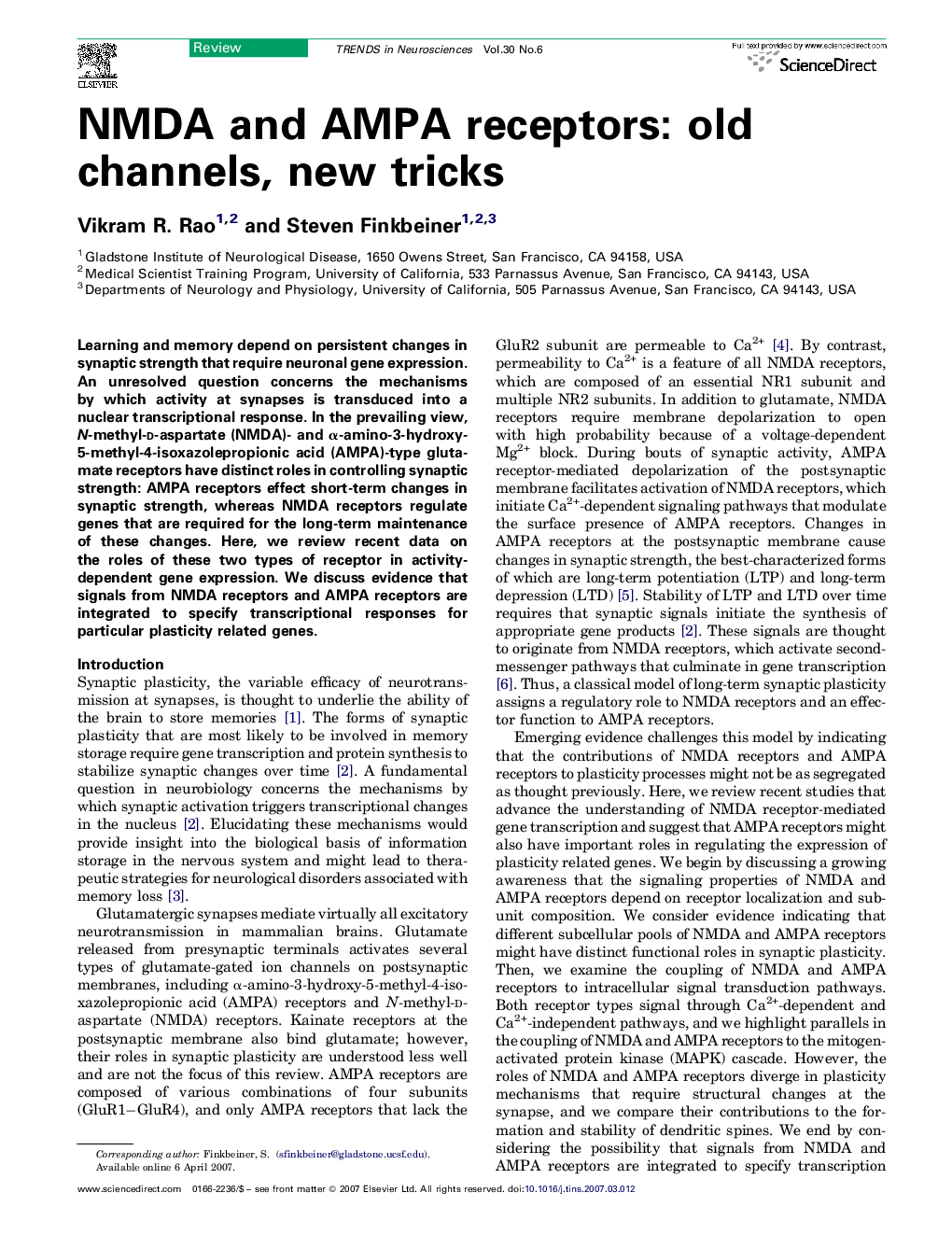| Article ID | Journal | Published Year | Pages | File Type |
|---|---|---|---|---|
| 4354983 | Trends in Neurosciences | 2007 | 8 Pages |
Learning and memory depend on persistent changes in synaptic strength that require neuronal gene expression. An unresolved question concerns the mechanisms by which activity at synapses is transduced into a nuclear transcriptional response. In the prevailing view, N-methyl-d-aspartate (NMDA)- and α-amino-3-hydroxy-5-methyl-4-isoxazolepropionic acid (AMPA)-type glutamate receptors have distinct roles in controlling synaptic strength: AMPA receptors effect short-term changes in synaptic strength, whereas NMDA receptors regulate genes that are required for the long-term maintenance of these changes. Here, we review recent data on the roles of these two types of receptor in activity-dependent gene expression. We discuss evidence that signals from NMDA receptors and AMPA receptors are integrated to specify transcriptional responses for particular plasticity related genes.
